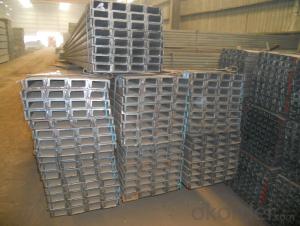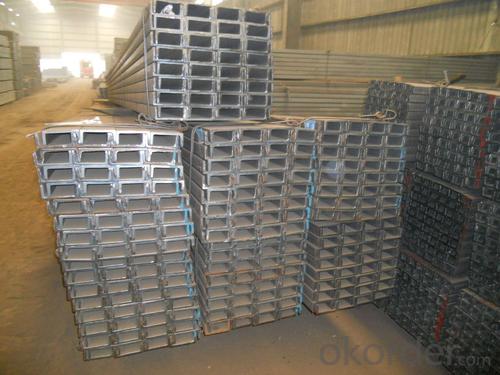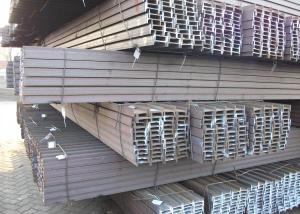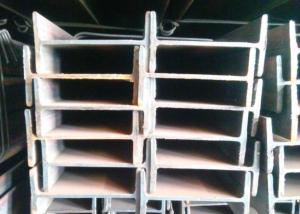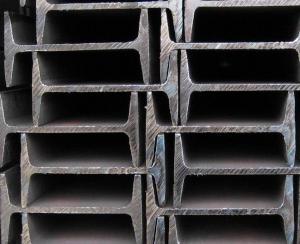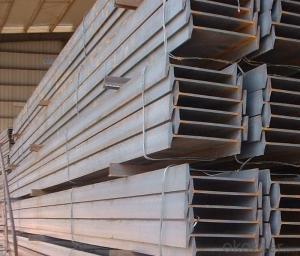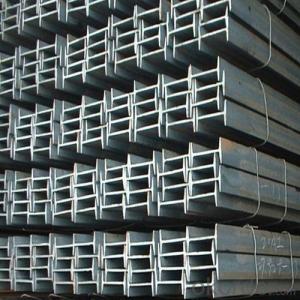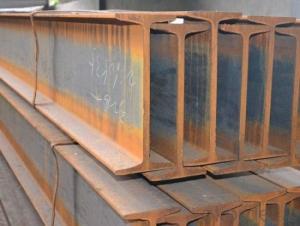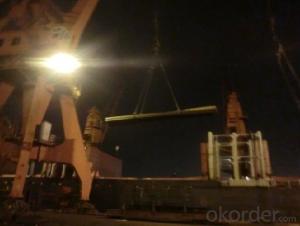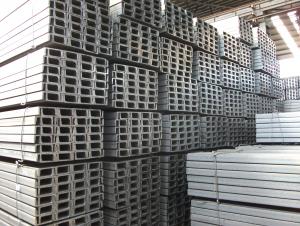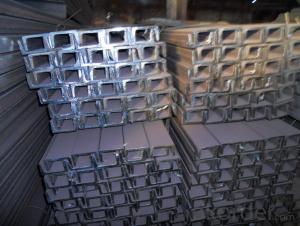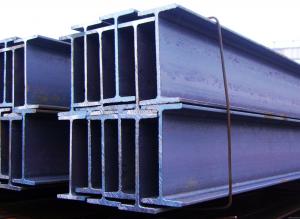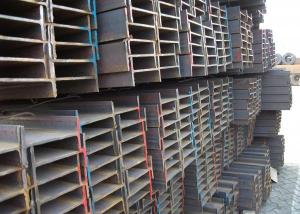Hot Rolled U-Channel Steel with Many Standard
- Loading Port:
- Tianjin
- Payment Terms:
- TT OR LC
- Min Order Qty:
- 20 m.t.
- Supply Capability:
- 1000 m.t./month
OKorder Service Pledge
OKorder Financial Service
You Might Also Like
Product Description:
OKorder is offering Hot Rolled Steel U-Channel at great prices with worldwide shipping. Our supplier is a world-class manufacturer of steel, with our products utilized the world over. OKorder annually supplies products to European, North American and Asian markets. We provide quotations within 24 hours of receiving an inquiry and guarantee competitive prices.
Product Applications:
Hot Rolled Steel U-Channel can be applied to construction of warehouses, workshops, sport stadiums and car parks etc.The hot rolled channel steel belongs to carbon structural steel which is applied to in the field of construction and machinery.In details, the hot rolled channel steel is usually used for arch-itechtural structure, and they could be welded in order to support or hang a vari-ety of facilities. They are also usually used in combination with I beam. Generally,the hot rolled channel steel we supply must possess perfect welding property, riveting property and mechanical property and so on.
Product Advantages:
OKorder's Hot Rolled Steel U-Channel are durable, strong, and resist corrosion.
Main Product Features:
· Premium quality
· Prompt delivery & seaworthy packing (30 days after receiving deposit)
· Corrosion resistance
· Can be recycled and reused
· Mill test certification
· Professional Service
· Competitive pricing
Product Specifications:
We supply high quality MS Channel at reasonable price, including Chinese standard, Japanese standard and so on.
Standard | GB/JIS |
Material Grade | Q235,SS400 |
Technique: | Hot Rolled |
Sizes as per chinese standard: | 50*37*4.5mm - 300*89*11.5mm |
Sizes as per japanese standard: | 50*25*3mm – 200*80*7.5mm |
Length: | 6meter, 9meter, 12meter |
Package & Delivery of MS Channel:
1.The hot rolled channel steel will be packed in bundle with steel wire at each end of every bundle and color marking in order to help the customer to recognize his goods more easily at sight.
2. And the hot rolled channel steel could be loaded into 20ft or 40ft container, or by bulk cargo.If the weight of each bundle reaches more than 3.5 mt, the loading by break bulk cargo should be choosed.When the weight of each bundle reaches less than 3mt, the loading by container should be choosed.
3.As for the transportaion from mill to loading port, the truck will be usually used. And the maximum quantity for each truck is 40mt.
4.All in all, we could do in accordance with customer's request
FAQ:
Q1: Why buy Materials & Equipment from OKorder.com?
A1: All products offered byOKorder.com are carefully selected from China's most reliable manufacturing enterprises. Through its ISO certifications, OKorder.com adheres to the highest standards and a commitment to supply chain safety and customer satisfaction.
Q2: How do we guarantee the quality of our products?
A2: We have established an advanced quality management system which conducts strict quality tests at every step, from raw materials to the final product. At the same time, we provide extensive follow-up service assurances as required.
Q3: How soon can we receive the product after purchase?
A3: Within three days of placing an order, we will begin production. The specific shipping date is dependent upon international and government factors, but is typically 7 to 10 workdays.

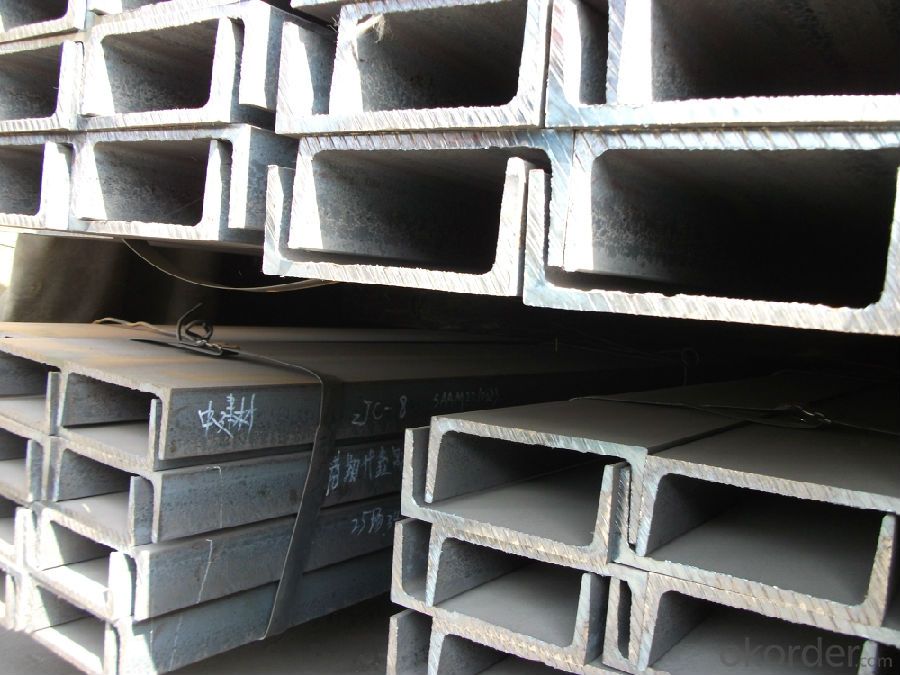
- Q: How do you calculate the moment of inertia for a steel I-beam?
- To calculate the moment of inertia for a steel I-beam, you need to consider its geometry and dimensions. The moment of inertia, denoted as I, quantifies an object's resistance to changes in rotational motion. For an I-beam, which consists of a central web and two flanges, the moment of inertia can be calculated using the parallel axis theorem. First, determine the dimensions of the I-beam, such as the height (h), width of the flanges (b), thickness of the web (t), and the length of the flanges (L). These measurements will be necessary for the calculations. The moment of inertia for the I-beam can be calculated as the sum of two components: one for the web, and another for the flanges. The formula for calculating the moment of inertia of a rectangular plate (such as the web) is: I_web = (1/12) * h * t^3 Where h is the height of the web and t is the thickness of the web. The moment of inertia for the flanges can be calculated as: I_flanges = (1/12) * b * L^3 Where b is the width of the flanges and L is the length of the flanges. Finally, you can use the parallel axis theorem to calculate the total moment of inertia for the I-beam. The parallel axis theorem states that the moment of inertia about an axis parallel to an axis through the center of mass is equal to the sum of the moment of inertia about the center of mass and the product of the mass and the square of the distance between the two axes. Assuming the center of mass is at the midpoint of the height of the I-beam, the total moment of inertia (I_total) can be calculated as: I_total = I_web + 2 * I_flanges + 2 * (m_flanges) * (h/2)^2 Where m_flanges is the mass of one flange (assuming both flanges have the same mass). By plugging in the values for the dimensions and solving the equations, you can calculate the moment of inertia for the steel I-beam. It is important to note that the actual dimensions and shape of the I-beam may vary, so it is essential to use the correct measurements for accurate calculations.
- Q: How do steel I-beams perform in terms of sound transmission?
- Steel I-beams are known for their excellent performance in terms of sound transmission. Due to their rigid and dense structure, steel I-beams effectively block and dampen sound waves, minimizing the amount of noise that can pass through them. This makes them an ideal choice for structures where sound insulation is important, such as commercial buildings, industrial facilities, and residential homes. The high mass and stiffness of steel I-beams help to reduce airborne sound transmission, preventing the propagation of noise from one area to another. Additionally, steel I-beams can be further enhanced with additional soundproofing materials, such as acoustic insulation, to improve their sound transmission properties. Overall, steel I-beams are highly effective in reducing sound transmission and providing a quieter and more comfortable environment.
- Q: How do steel I-beams resist fire?
- Steel I-beams resist fire due to their high melting point and heat conductivity. When exposed to fire, the steel beams absorb and distribute the heat, preventing rapid temperature increase. This slows down the structural weakening process and maintains the overall stability of the building. Additionally, steel I-beams are often protected by fire-resistant coatings or encased in fire-resistant materials, further enhancing their ability to withstand fire.
- Q: What are the different types of steel coatings available for I-beams?
- When it comes to coating I-beams with steel, there are various options available, each with its own unique advantages and properties. Firstly, hot-dip galvanizing is a widely used and effective method. This involves immersing the I-beams in molten zinc, resulting in a strong and corrosion-resistant coating. It is particularly useful for outdoor and marine applications, offering excellent protection against rust. Alternatively, paint coatings can be applied to I-beams to protect against corrosion and enhance their appearance. Depending on the desired level of protection, different types of paint coatings, ranging from simple primers to advanced multi-coat systems, can be used. These coatings are typically suitable for indoor and non-corrosive environments. In industrial settings where I-beams are exposed to aggressive substances or harsh conditions, epoxy coatings are often preferred. These coatings are known for their exceptional chemical resistance and adhesion properties. They offer a high level of protection against corrosion, abrasion, and chemicals. Another popular choice for coating I-beams is powder coatings. These coatings are durable, versatile, and environmentally friendly. They involve the application of a dry powder to the surface of the I-beams, which is then heated and cured to form a protective layer. Powder coatings provide excellent resistance to impact, moisture, and UV rays, making them suitable for both indoor and outdoor applications. Finally, metallic coatings, such as zinc-aluminum alloys or aluminum coatings, offer a sacrificial layer of protection to I-beams. Instead of corroding the steel, these coatings corrode themselves, creating a barrier against corrosion. Metallic coatings are commonly used in environments with high moisture levels or corrosive elements. To select the most suitable steel coating for I-beams, it is important to consider the specific requirements of the application, including the necessary level of corrosion resistance, the intended environment for the I-beams, and the desired lifespan of the coating.
- Q: Can steel I-beams be used in mezzanine floors?
- Yes, steel I-beams can be used in mezzanine floors. Steel I-beams are commonly used in construction to provide structural support and can be an excellent choice for mezzanine floors due to their strength and load-bearing capabilities.
- Q: How do steel I-beams perform in high-traffic bridge applications?
- Due to their exceptional strength and durability, steel I-beams are an excellent option for high-traffic bridge applications. These beams are specifically engineered to withstand heavy loads and offer superior structural support, making them ideal for use in bridges experiencing high volumes of traffic. A key advantage of steel I-beams is their ability to carry heavy loads. They can withstand the weight of multiple vehicles simultaneously, ensuring the safety and stability of the bridge, even under extreme traffic conditions. Not only are steel I-beams strong, but they also possess long-term durability. They are highly resistant to corrosion, rust, and other environmental factors, enabling their use in various climates and locations. This durability ensures that the bridge remains structurally sound and can endure the wear and tear caused by continuous traffic flow. Moreover, the design of steel I-beams allows for efficient weight distribution, reducing the strain on the bridge structure. This efficient load distribution helps minimize deflection and deformation, guaranteeing the bridge's integrity over time. Another advantage of steel I-beams is their versatility in bridge construction. They can be easily fabricated and tailored to meet the specific requirements of each bridge project, including length, width, and height. This flexibility empowers engineers to design bridges that can accommodate different traffic conditions, ensuring optimal performance and safety. Overall, steel I-beams are a highly reliable and efficient choice for high-traffic bridge applications. Their strength, durability, and versatility make them the preferred option for engineers and architects when designing bridges capable of handling heavy traffic loads and providing long-lasting performance.
- Q: What are the considerations for accessibility and universal design with steel I-beams?
- When considering accessibility and universal design with steel I-beams, several factors need to be taken into consideration. Firstly, it is important to ensure that the steel I-beams are designed and installed following the relevant accessibility guidelines and standards. This includes complying with building codes and regulations that address accessibility requirements for individuals with disabilities. These guidelines may vary depending on the country or region, so it is crucial to be familiar with the specific requirements in the project's location. Secondly, the size and positioning of the steel I-beams should be carefully planned to allow for easy movement and navigation within the space. This involves considering clearances and widths that accommodate wheelchair users and individuals with mobility aids. The I-beams should not obstruct pathways or create barriers that impede accessibility. Moreover, the material and finish of the steel I-beams should be chosen with accessibility in mind. It is important to consider factors such as slip resistance, visibility, and ease of gripping. Non-slip coatings or textured finishes can be applied to the I-beams to prevent accidents caused by slippery surfaces. Additionally, contrasting colors can be used to make the I-beams more visible for individuals with visual impairments. Furthermore, if the steel I-beams are part of a structure that requires ramps or elevators for accessibility, they need to be properly integrated into the design. The I-beams should support the weight of these features and ensure their stability and safety. Inclusive design is another crucial consideration when it comes to accessibility and universal design with steel I-beams. Inclusive design focuses on creating environments that can be used by people of all abilities and ages. It is important to involve individuals with disabilities or accessibility needs in the design process to ensure that their perspectives and requirements are taken into account. Overall, accessibility and universal design considerations for steel I-beams encompass compliance with regulations, proper sizing and placement, appropriate material selection, integration with accessibility features, and inclusive design practices. By incorporating these considerations, steel I-beams can help create spaces that are accessible to everyone, promoting inclusivity and equal access for all individuals.
- Q: How are steel I-beams manufactured?
- Steel I-beams are manufactured through a process called hot rolling, where molten steel is transformed into a long, solid beam shape. The steel is first melted in a furnace and then poured into a continuous casting machine to form a billet. The billet is then heated and passed through a series of rolling mills, which apply pressure to shape it into the desired I-beam profile. Finally, the beam is cut to the required length, cooled, and prepared for delivery or further processing.
- Q: How are steel I-beams protected against galvanic corrosion?
- Steel I-beams are protected against galvanic corrosion through a process called galvanization. Galvanization involves applying a protective layer of zinc to the surface of the steel beam. This is typically done through a hot-dip galvanizing process, where the steel beam is immersed in a bath of molten zinc. The zinc forms a metallurgical bond with the steel, creating a barrier that protects the underlying steel from corrosion. The zinc coating acts as a sacrificial anode, meaning that it corrodes preferentially to the steel when exposed to corrosive elements. This sacrificial corrosion of the zinc prevents the steel from being exposed to corrosive agents, thus prolonging the life of the steel I-beam. Additionally, the zinc coating provides a physical barrier between the steel and the environment, preventing moisture, oxygen, and other corrosive substances from coming into contact with the steel surface. Furthermore, the thickness of the zinc coating can vary depending on the level of protection required. Thicker coatings are commonly used in more corrosive environments, while thinner coatings may be suitable for less aggressive conditions. Regular inspection and maintenance of the zinc coating, such as removing any accumulated dirt or debris, can also help to ensure its effectiveness in preventing galvanic corrosion. In summary, steel I-beams are protected against galvanic corrosion by applying a zinc coating through the galvanization process. This protective layer acts as a sacrificial anode, corroding preferentially to the steel and preventing corrosive agents from reaching the steel surface. Regular maintenance and inspection of the zinc coating are important to ensure its long-term effectiveness in protecting against galvanic corrosion.
- Q: How do steel I-beams handle vibrations from nearby railways or highways?
- Steel I-beams are designed to handle vibrations from nearby railways or highways efficiently. The structural properties of steel, combined with the I-beam shape, allow them to effectively absorb and distribute vibrations, minimizing their impact on the overall structure. Additionally, steel has a high stiffness-to-weight ratio, making it more resistant to vibrations compared to other materials. Overall, steel I-beams are a reliable choice for withstanding vibrations caused by nearby railways or highways.
Send your message to us
Hot Rolled U-Channel Steel with Many Standard
- Loading Port:
- Tianjin
- Payment Terms:
- TT OR LC
- Min Order Qty:
- 20 m.t.
- Supply Capability:
- 1000 m.t./month
OKorder Service Pledge
OKorder Financial Service
Similar products
Hot products
Hot Searches
Related keywords
